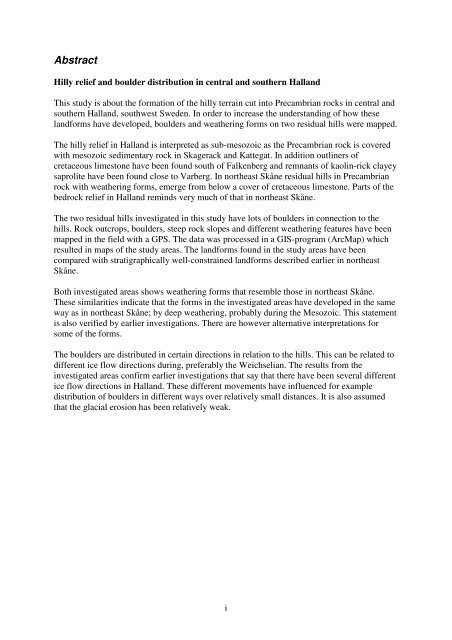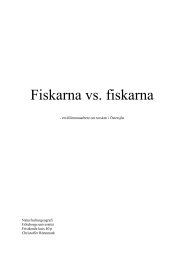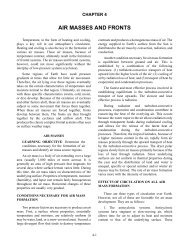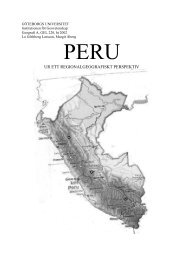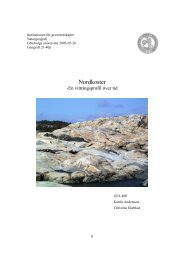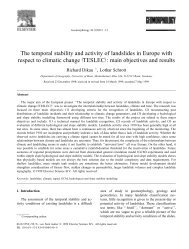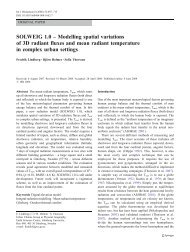blockfördelning kring bergkullar i mellersta halland - Göteborgs ...
blockfördelning kring bergkullar i mellersta halland - Göteborgs ...
blockfördelning kring bergkullar i mellersta halland - Göteborgs ...
Create successful ePaper yourself
Turn your PDF publications into a flip-book with our unique Google optimized e-Paper software.
Abstract<br />
Hilly relief and boulder distribution in central and southern Halland<br />
This study is about the formation of the hilly terrain cut into Precambrian rocks in central and<br />
southern Halland, southwest Sweden. In order to increase the understanding of how these<br />
landforms have developed, boulders and weathering forms on two residual hills were mapped.<br />
The hilly relief in Halland is interpreted as sub-mesozoic as the Precambrian rock is covered<br />
with mesozoic sedimentary rock in Skagerack and Kattegat. In addition outliners of<br />
cretaceous limestone have been found south of Falkenberg and remnants of kaolin-rick clayey<br />
saprolite have been found close to Varberg. In northeast Skåne residual hills in Precambrian<br />
rock with weathering forms, emerge from below a cover of cretaceous limestone. Parts of the<br />
bedrock relief in Halland reminds very much of that in northeast Skåne.<br />
The two residual hills investigated in this study have lots of boulders in connection to the<br />
hills. Rock outcrops, boulders, steep rock slopes and different weathering features have been<br />
mapped in the field with a GPS. The data was processed in a GIS-program (ArcMap) which<br />
resulted in maps of the study areas. The landforms found in the study areas have been<br />
compared with stratigraphically well-constrained landforms described earlier in northeast<br />
Skåne.<br />
Both investigated areas shows weathering forms that resemble those in northeast Skåne.<br />
These similarities indicate that the forms in the investigated areas have developed in the same<br />
way as in northeast Skåne; by deep weathering, probably during the Mesozoic. This statement<br />
is also verified by earlier investigations. There are however alternative interpretations for<br />
some of the forms.<br />
The boulders are distributed in certain directions in relation to the hills. This can be related to<br />
different ice flow directions during, preferably the Weichselian. The results from the<br />
investigated areas confirm earlier investigations that say that there have been several different<br />
ice flow directions in Halland. These different movements have influenced for example<br />
distribution of boulders in different ways over relatively small distances. It is also assumed<br />
that the glacial erosion has been relatively weak.<br />
i


